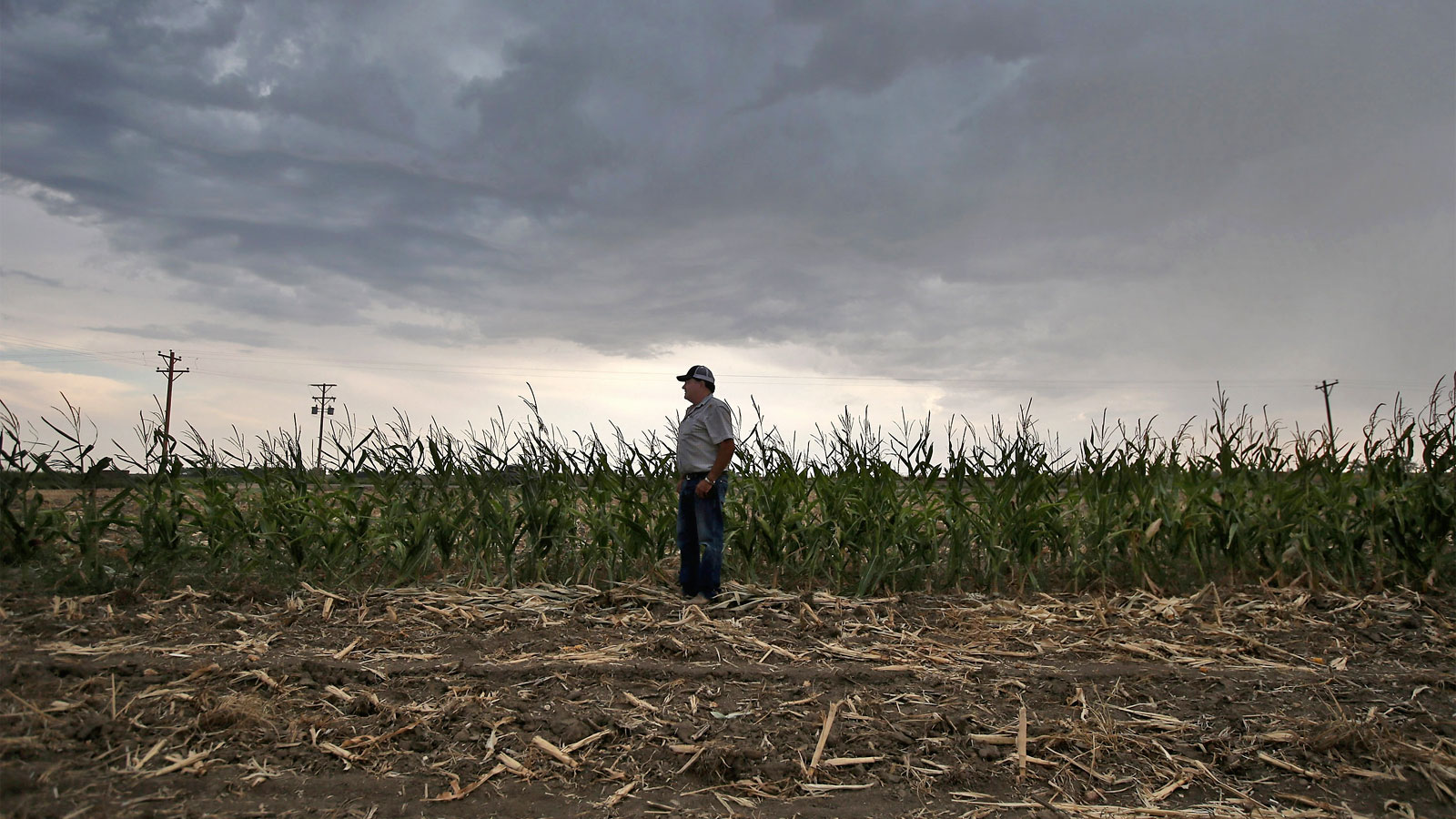Farmers across the United States are increasingly seeing the impacts of climate change first hand, with a rise in the severity and frequency of extreme weather events. Beyond the loss of food supplies, new data on agricultural insurance payments shows the financial burden of these disasters on taxpayers.
Over the last 25 years, insurance payments to farmers for crop losses due to drought and flooding have increased threefold, according to a report from the Environmental Working Group, or EWG, an environmental research advocacy group based in Washington, D.C. Taxpayers cover 60 percent of crop insurance premiums through subsidies, and additionally cover damages that exceed premiums. Since 1995, more than $143 billion in federal crop insurance has been paid out to U.S. farmers. Of that, 61 percent, or $87.6 billion, was due to climate change-related impacts.
“As extreme weather has become more frequent, the climate crisis has already increased insurance payments and premium subsidies,” the report stated. “These costs are expected to go up even more, as climate change causes even more unpredictable weather conditions.”
Insuring the country’s crops, the report says, is likely to get more expensive for everyone: insurance companies, farmers, and especially taxpayers. And farmers currently aren’t required to do anything to remediate their risk for crop damage.
The national crop insurance program, run by the U.S. Department of Agriculture, or USDA, doesn’t incentivize or mandate farmers to address or adapt to climate change in their operations, EWG says. The program “disincentivizes farmers from adapting to climate change,” Anne Schechinger, the midwest director for the nonprofit, told Grist.
It’s something EWG hopes will change with the next farm bill, slated for the Congressional agenda in 2023. The farm bill is a federal legislative package passed once every five years that includes policies for everything from crop insurance to food access, commodities pricing, and subsidies.
“There’s definitely a lot of different things that can be done to the program to encourage farmers to adapt to climate change,” Schechinger said. A place to start, she noted, would be determining premiums by land risk.
“We need to reevaluate,” she said. “Should we essentially be subsidizing the growth of crops in these high-risk, environmentally sensitive areas?” Instead, farmers could be paid to permanently retire land repeatedly damaged by extreme weather, Schechinger suggested.
The relationship between agriculture and climate change is compounding – rising global temperatures fuel more intense and frequent extreme weather events and alter growing conditions, damaging more crops, while agricultural practices and industry contribute significantly to the drivers of climate change. According to the Environmental Protection Agency, the U.S. agricultural sector was responsible 10 percent of the nation’s greenhouse gas emissions in 2019.
The Environmental Working Group analysis used existing data from the USDA, and the findings are supported by previous research. In a report published in the journal Environmental Research Letters, scientists estimated that between 1991 and 2017, rising temperatures caused $27 billion in crop insurance loss nationally. According to the USDA, if emissions trends continue, the cost of insuring crops could rise by as much as 22 percent by 2080, even if farmers adapt what they plant and where.
“We know crop insurance has already increased because of climate change,” Schechinger said. “And there are a lot of estimates saying that it is going to get even more expensive in the future.”



